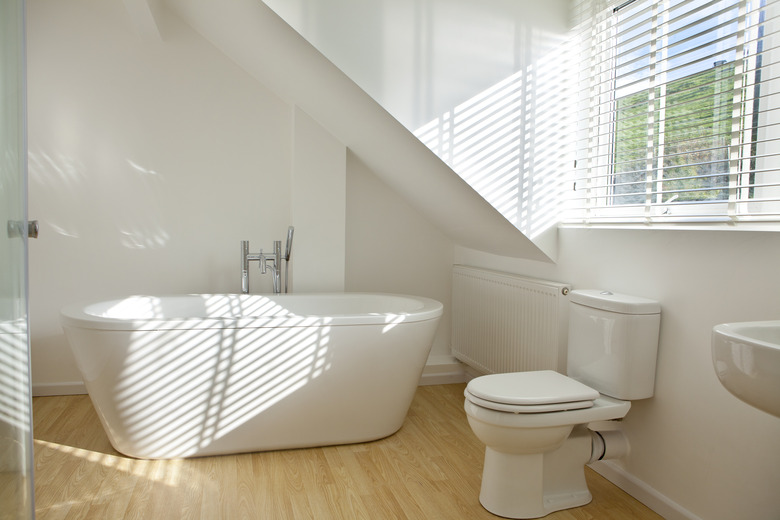How To Install A Toilet On Hardwood Floor
Hardwood flooring doesn't create many problems when it comes to installing a toilet. In fact, it's easier to install a toilet on a wood floor than it is to install one on ceramic tiles, which is a more common bathroom floor covering. You'll encounter fewer problems if the flooring is already down when you install the toilet floor plate, more commonly known as the flange, but it's no biggie if it isn't. One thing is for sure, though. The toilet itself cannot be in place when you lay the flooring.
Rough-In Plumbing for a Toilet on a Wood Floor
Rough-In Plumbing for a Toilet on a Wood Floor
If you're putting a toilet in a place where there hasn't been one before, you need to install the waste, vent and water-supply pipes. The water pipe goes in the wall and isn't affected by the floor covering. You'll need to cut a 4-inch hole in the floor for the waste pipe, though, and its center should be at least 12 inches from the back wall and walls on either side of the toilet. Cut this hole with a reciprocating saw after drilling a pilot hole to get the saw started.
After cutting the hole, you then install the flange. It consists of a plastic or metal ring to which you can attach the toilet and a 4-inch nipple to which you can attach the waste pipe. Most plumbers use #10 Phillips screws to attach the flange to the floor. After gluing the waste pipe to the flange nipple, running the pipe to the sewer and teeing in a vent pipe that ties into the main vent stack, you're ready to install the toilet.
Install a Toilet on a Wood Floor
Install a Toilet on a Wood Floor
If the flooring is already in place when you install the toilet, the flange will sit on top of it. When you install the toilet wax ring on the hardwood floor, you may find that the flange raises the toilet a small amount above the floor. This will cause it to rock, and the wax seal can break, resulting in a leak whenever you flush.
To avoid this, shim up the toilet using either plastic toilet shims – available at any hardware store – or a toilet base slab with the same shape as the base of the toilet. One you've secured the toilet to the flange by tightening the two toilet bolts, protect the wood floor with caulk. Clear or colored silicone caulk are both suitable to caulk the toilet to the floor.
The Flange Is Already In Place When You Lay Flooring
The Flange Is Already In Place When You Lay Flooring
You may encounter a situation in which the toilet flange has already been installed on the subfloor, and you're laying new flooring. In that case, you cut the flooring boards to fit around the flange, leaving about an inch clearance in all directions. This recesses the flange, and it can create the opposite problem, depending on the wood thickness: The wax ring may not reach the bottom of the toilet when you mount it.
The most secure solution is to increase the thickness of the flange with a flange extender. This is a plastic or metal ring that fits on the top of the flange and is held in place by the screws that hold the flange to the floor.
Flange extenders come in various thicknesses, so choose the thickness you need after measuring the distance between the top of the flange and the surface of the floor. A properly sized extender raises the flange height to within 1/16 inch of the floor surface. Mount the toilet on the extended flange, apply wood floor caulk around the toilet base and you're done fixing the toilet to the wooden floor.
